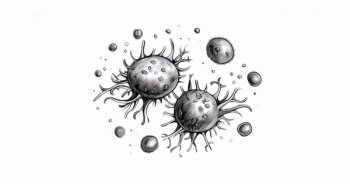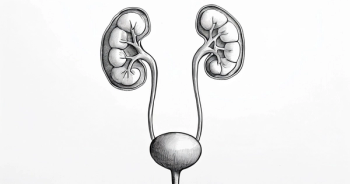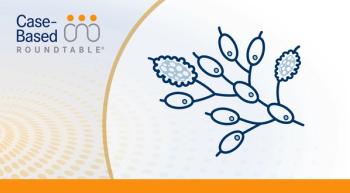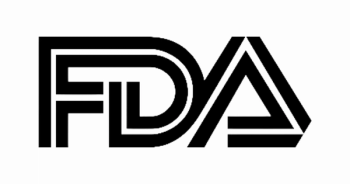
Peers & Perspectives in Oncology
- March I 2025
- Pages: 58
Wildfires’ Impact on Patients With Cancer: Lessons in Crisis Response
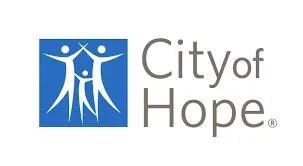
The California wildfires severely affected patients with cancer, requiring evacuation protocols, community support, and learning for future disaster preparedness.
Edward S. Kim, MD, MBA, discussed the impact of recent wildfires on patients with cancer at City of Hope in Duarte, California, in an interview with Peers & Perspectives in Oncology. He highlighted the increased stress and anxiety for patients and staff, with many people evacuated and facing air quality issues. City of Hope implemented protocols, including evacuation plans, patient relocation, and resource distribution. Kim emphasized the importance of maintaining treatment schedules and providing support for patients and staff, the resilience and heroism of health care workers, and the need for disaster planning.
Peers & Perspectives in Oncology: What were the immediate effects of the wildfires on patients with cancer and the health care workers?
Kim: This is a tragedy that hasn’t been seen in California for quite some time; lives were lost and there was widespread devastation. We consider health care workers first responders on the front lines. It’s been amazing to see everybody roll up their shirtsleeves and dig in—literally—to help everyone who had been evacuated or who had been dealing with the fires while in treatment. No one can predict these types of tragedies occurring, but our job on the front lines is to help and support our patients when these types of disasters occur. That’s the first aspect.
With something like this, I can’t imagine being diagnosed with cancer or going through treatment with cancer at the same time you’re wondering if you are going to lose your home. At the pace the fires were spreading, they severely impacted the city of Altadena, California, and affected so many people—hundreds of thousands of people in the evacuation areas who couldn’t go back to their houses for weeks. Many of our staff were affected by evacuations as well. The anxiety level, the concerns of people who are battling cancer, whose families are supporting them, added another huge level of stress and concern on top of this.
I’ve seen this before when I was in Houston, Texas, with the floods and the hurricanes. It happens everywhere, and now we have deep, freezing cold across the north and even down into the south, and that’s going to affect people. We know there are these events that can occur that can be extremely disruptive. It doesn’t distract us from our calling to support these patients. We know as leaders that we not only have to make sure our patients and their families are treated well but also our staff and their families as well. It takes us all to be able to do that.
How did the rapid spread and severity of the wildfires exacerbate the challenges faced by patients?
Specifically with lung cancer and frankly with other cancers, it’s challenging because of the burn that’s occurring. Anyone in Southern California knows since these fires have started, you walk outside, there’s a layer of black dust on top of everything, and that’s only what we can see. We know there have been warnings to wear masks now when you go outside because of particulate matter. It’s this particulate matter that’s 2.5 μm or less, and that can get inside your lungs. It can cause issues that we don’t understand, but we know that air pollution can be a carcinogen. We don’t yet know what those ramifications will be; it’s similar to how we didn’t know how the pandemic was going to impact cancer prevention and treatment. We knew that people didn’t show up for their screenings, and so they delayed them, and now we’re seeing cancer at more advanced stages.
I worry about this air quality and how long it will persist. The fires are getting better, as far as under control, but the ash that exists, the burned materials are still there, and as long as they’re airborne, the air quality is not going to be great in Southern California. That will cause some issues. We don’t know what that type of exposure will do but we know that it can make conditions worse for patients with lung cancer, head and neck cancers, any aerodigestive tract cancer, or people with chronic diseases like asthma or emphysema.
We want people to stay safe. We want them to check the air quality in their local area and make sure that they’re protecting themselves and their families. But the magnitude and severity of this wildfire is going to impact our patients and their families for years to come, and we just want to be cognizant of that and make sure we are doing everything we can to protect them.
What are the usual protocols during wildfires, especially for patients who need inpatient care?
The fires were spreading at such a quick rate that they were within 8 miles of our City of Hope campus in Duarte, California. You could see the fires on the hillside from the campus. We have hundreds of patients admitted all the time and thousands more being seen in the outpatient setting. We had to prepare to evacuate at one point, and that meant finding beds available at nearby hospitals and making plans to transport our patients safely. We had protocols all in place. We were ready to move at a minute’s notice, if needed. Everybody was put on high alert. We had to cancel patient appointments for several days because of the impending danger. That’s very important.
The other protocols are for protecting our patients and taking care of our workforce. There were patients and employees who lost their houses, and we provided resources to assist them with short-term housing, supplies and other necessities. People didn’t even have toothbrushes or toiletries.
We have countless stories of staff members who evacuated but still showed up to work because they know when you go into medicine, it’s a humanistic, altruistic profession. When you leave your house and you’ve been evacuated, you don’t know if it’s burning down and you show up to the hospital and continue to take care of patients, whether you are a social worker, physician, nurse, or custodian—that’s powerful. We had so many stories like that at City of Hope. It showed the dedication that our health care workers had.
While this was happening, the safety, health and well-being of our patients and staff was the priority. The pandemic helped us with telemedicine and telehealth, so that was certainly available for our patients. In terms of minimizing exposure to the air, we suggest people close their windows, use an air purifier and wear masks—an N95 or a KN95 is ideal. I always encourage people to shower or wash their face off when they come inside after spending time outdoors because that particulate matter can certainly linger on your skin.
How is the situation currently for City of Hope, and how has the institution taken steps to make sure these patients are safe?
Luckily, we’ve gone back to normal quickly. We were only disrupted for a few days. It’s like when we take care of patients who are battling cancer, and we treat them and cure them. The cure doesn’t just start with the disease. We have to heal the whole person. We consider that survivorship in the clinical setting. In this type of natural disaster setting, it’s also survivorship but it’s survivorship of their real life. We’ve tried to help with emergency assistance funds. We’ve partnered with relocation firms to help staff as well as patients find housing prospects. This has been challenging in California especially and across the country, as the inventory of housing is very low.
There have been so many acts of kindness that have occurred from donations locally at the Santa Anita Park racetrack in California, which is down the street from City of Hope. There were thousands of people volunteering and donating both food and supplies. They had to stop soliciting donations because there were so many being dropped off. I think that was important.
Clinically, in patients with lung cancer, we need to help them maintain their status. Once we cure them after treating them, how can we further help them through survivorship? A lot of that is prevention and maintenance, and we want them to stay safe. We want to optimize their outcomes. Therefore, the masking, avoiding sick contacts, and avoiding being outside for long periods of time are important aspects to help them. Also, it’s important to follow up and make sure their treatment is not disrupted. Whether they had to evacuate and had to receive treatment as an outpatient, we would do that, or if they had to evacuate elsewhere—some people had to evacuate to homes of family members 3 or 4 hours away—we would help organize treatment for them at a local center and make sure that those doctors knew where they were in treatment and the importance of the treatment. We wanted to put the patient at the center of how we’re helping them, making sure they had support resources for their family and everything we can to make sure that we can optimize best outcomes for them.
What have you learned from these wildfires? Would this make you want to change anything in the future?
We realized how many heroes we have across our organization and that our frontline folks are heroic. The natural disaster reinforced what we already knew about our faculty and staff. We have heroes who are going above and beyond to help our patients, help us deliver the best care and the best outcomes to cure people.
It also showed us that we need to have close relationships with our regional partners, other health systems, etc, because at the end, we are all one family, and we all want to do what’s best for the patients. You have to help your neighbors out; that’s the key. It was a beautiful thing to see everybody joining hands and supporting the patients. It didn’t matter what patch or logo you had on your jacket or on the side of your building. It does take something like this for everyone to find that connectedness and support for each other. It was very challenging for many of our folks.
In Orange County, California, where we were not affected, we had people in the wee hours of the morning helping, because for many of those patients who were displaced, we saw them down here in Orange County. That’s the strength of what City of Hope has in 30-plus sites in Southern California. Some of our regional sites were affected and were in these evacuation areas, and we were able to easily treat those patients at our other locations and make sure they had the care they needed.
I’ve seen a lot of resiliency, which has been very impressive. I’ve seen a lot of heroism, and I’ve seen a lot of community occur. We activated our emergency management team very quickly, and although it’s always stressful, it was seamless—how we came together and supported each other.
Do you have any final takeaways from the wildfires and how they affected your community of patients and frontline health care workers?
I was very proud of the way City of Hope mobilized, the way we took care of our patients, the way our staff and our faculty leaned in despite all the issues that were occurring in their own lives to continue to care for our patients. It’s heartwarming and inspiring to see, and it reminds us why we’re here each day. We want to produce the best possible outcomes for people—not only in preventing, treating cancer but in being by their side through survivorship. That’s important to us.


